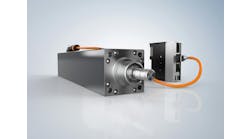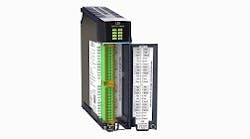Robots are becoming more popular in our daily lives and progressing in industrial manufacturing. Where there is demand, there is research and money for engineers to make improvements to applications. Part of the progression of robotics in the 21st century involves improvements in motion technologies.
What’s at the base of motion technologies? Actuation. Research and development with humanoid robots have encouraged new actuator and servo valve designs in hydraulics and improvements in other actuators.
Three main types of actuators are on the market: electrical, pneumatic and hydraulic. Which actuator is best for replication of a human body? Most likely, hydraulic actuators or a hybrid of hydraulic and electrical. Why? Because of the energy storage in a small location and the dynamics. Hydraulics can push more loads than electrical.
Humanoid robots have been able to perform parkour moves based on utilizing damping from hydraulic actuators. Humanoid robots are the driving force for creating an electric-hydraulic hybrid, but the applications are real for commercial industrial equipment and grippers. Hydraulic-driven actuators are required for powerful movements in severe environments. This has driven the development of miniature hydraulics to include different ideas with equipment configuration. Compact electro-hydraulic actuators may have a valve unit, variable capacity hydraulic pump, pressure tank, servo motor and hydraulic cylinder in one housing.
There are small bore hydraulic cylinders ranging from 2 to 4 mm. Hydraulic efficiency modules (HEMs) are seen in robotics and other applications where a smaller hydraulic power unit and some combined components might be needed and take up less space. For instance, damping and brakes may require added HEMs and direct drives to provide enough fluid in the system for when it’s needed to respond. The discussion with humanoid development has come down to whether the electric actuator gives the same force output as an hydraulic one.
The application is for limited space and precise movement, which applies to humanoids and grippers, or any other application requiring small spaces and precision movement. One challenge to this is creating miniature components with deviations for outer-diameter and inner-diameter orifices and seals. The idea is that the smaller hydraulics produce more performance per pound than larger heavy systems. This means understanding component limitations such as piston-seal contact area being a function of cylinder circumference and those kinds of parameter are more important in smaller systems because there is less margin for error. Some of these smaller components have required new machining designs.
Miniature hydraulics provide high-output density while minimizing size and weight, are shock resistant, have environmental resistance to high heats and provide multiple degrees of freedom, while reducing sliding friction. These are all attributes that make miniature hydraulics ideal components for machine building and robot design. Electronic versions may be quieter and require less maintenance, but the tradeoff may be in response. Applications will dictate the needs of component choices.
For instance, the first Atlas humanoid robot, designed by Boston Dynamics to go into harsh environments, weighed in at 300 lb. The new Atlas, introduced in 2024 has retired its hydraulics for electrical actuation and has reduced its weight. Electric motor actuation has been replacing hydraulics since the 1980s, but, for some reason, hydraulic actuation has not gone away.
What is the takeaway? The evolution of robots has helped hydraulic actuator servo valves and power units to evolve. Thus, the choices for machine applications are greater now than they were in pre-humanoid development. This is an example of how research affects industrial applications. It also has improved motion and vision technologies in industry, as well as grippers. These improvements have been with electrical and hydraulic actuation components.
Industrial applications requiring high grip forces may use hydraulic grippers to achieve pump strengths up to 2,000 psi. Cobots are not generally a hydraulic gripper application. However, if you need to lift weights up to 500 kg, which is approximately 1,100 lb, then an hydraulic gripper and a safety boundary would be a possible solution for your application.
Hydraulic grippers may be used in material handling for loading drums or railcar applications involving loading freight. Smaller hydraulic systems may drive the grippers used in bigger applications. Micro-hydraulics are found in orthotic and prosthetic equipment, human-assist lifts, exoskeletons, hand tools, rescue robots, aircraft and missiles, race cars and oceanographic instrumentation.
How confident are you about your robot hydraulics knowledge and expertise? Take our quiz and gauge your payload.




